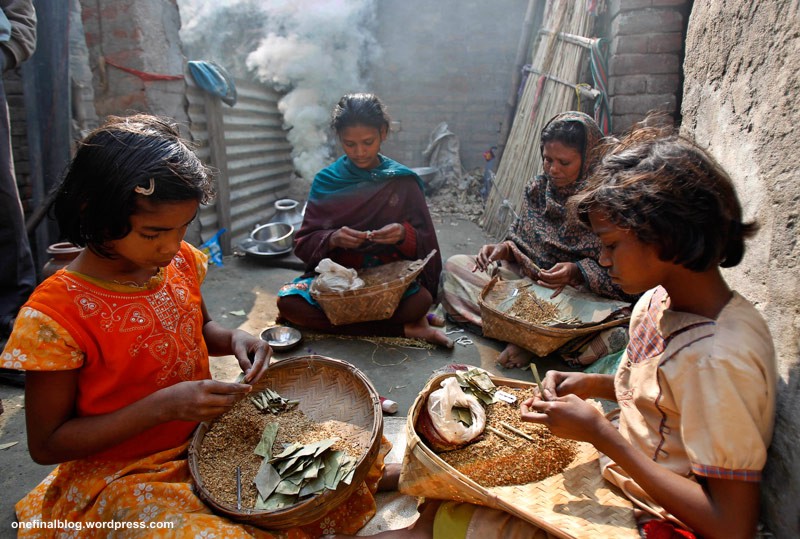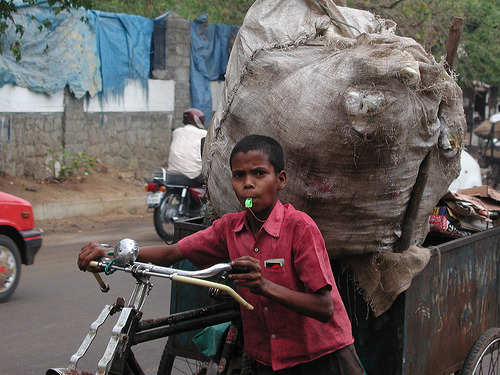
Context
Let’s go back to 1985 when a draft bill presented by an NGO, for the first time introduced the concept of regulation of working conditions, rather than complete prohibition of child labour. Groups working with children and child labour were all drawn into a nationwide debate. They were divided in their stand. One group felt that, although it may not be possible to eliminate child labour immediately, any move — legal or programmatic must be towards elimination. The second group felt that since child labour was a ‘harsh reality’ steps must be taken to ensure that they are not further exploited and therefore, legal measures were required to ensure this.[1] This draft was what was converted into the Child Labour (Prohibition and Regulation) Act 1986.
For those of us who have been witnesses to the debates around child labour since the 1980s, there is sense of déjà vu. The PIB release that released on May 16, 2015 says – However, while considering a total prohibition on the employment of child, it would be prudent to also keep in mind the country’s social fabric and socio-economic conditions. In a large number of families, children help their parents in their occupations like agriculture, artisanship etc. and while helping the parents, children also learn the basics of occupations. Therefore, striking a balance between the need for education for a child and the reality of the socio-economic condition and social fabric in the country, the Cabinet has approved that a child can help his family or family enterprise, which is other than any hazardous occupation or process, after his school hours or during vacation”.
This could be an undated statement as this is exactly the same argument that the government had made in 1985-86 to allow for children to be able to work in family based work or for skill training, even if it was hazardous. The only difference in 2015 is that while making an exception for children to be engaged in family based enterprises, the current bill qualifies it by saying that children must continue in school as per their Right to Education, and specifies that the family enterprise must not be hazardous. But therein lies the gap.
Loopholes in the law- are they deliberate?
‘Family’ is defined in the proposed bill as child’s mother, father, brother, sister and father’s sister and brother and mother’s sister and brother. It uses the word ‘help’ to describe the child’s involvement in the family enterprise (after school hours and during vacations).
In a feudal, caste driven Indian society what do these provisions amount to? Child labour in India has become so normalised that there is neither shock nor shame – it is a ‘necessary evil’. Since most family based occupations in India are caste based, the exception in Section 3 in the law, which allows children to work in family occupations, will only keep the caste system intact-like, for a potter's son/daughter to be a potter, a weaver's child to be a weaver and so on. Without doubt, this kind of a law will worst affect the Dalit and the marginalised who are at the bottom of the caste hierarchy. The Ministry officials of course say that this is taking the argument too far!
But, why would the government of a country, that is today by its own admission, the fastest growing economy of the world, feel compelled to justify and keep children in labour despite Parliamentary Standing Committee examining the bill saying: "The ministry is itself providing loopholes by inserting this proviso since it would be very difficult to make out whether children are merely helping their parents or are working to supplement the family income. Further, allowing children to work after school is detrimental to their health as rest and recreation is important for their physical and cognitive development."[2]The Committee also stated that rest and recreation is of utmost importance for the mental and physical development of a child and that working will only adversely affect their studies and their health.
Clearly, the Committee was more cognisant of the fact that children in India find it very hard to continue in school. That is why despite rising enrolment, retention is not that great. It is the girls, the Dalits and tribals who are ones who drop out to ‘help’ the family.
It must be recognised that the assumption, that ‘cultural traditions’ have to be accepted without intriguing into the inherent inequalities, perpetuates certain historic exploitative practices. It has been argued that any abstraction of child labour from children’s work accords social acceptability to some forms of child-work, masking marked ideological and gender biases in society. [3]
The officials of the Ministry of Labour and Employment who have drafted this bill say that this proviso is imperative to prevent criminalisation of parents and families. As a very senior official said “this explanation or exception is necessary, otherwise if I ask my child to put a nail on the wall—that too can be counted as child labour and lead to my prosecution- see how dowry law is used to harass innocent people. We don’t want a similar situation with this law”.
A quick look at the government’s ownstatistics of prosecution tells us how limited the use of the law has been in the past.
What is more, the government also noted that most employers were acquitted by the courts as the prosecution failed to prove the offence due to the casual approach of the prosecution witnesses and inability to produce independent witnesses. [4]
Under these circumstances, is it at all likely that ‘zealous members of society’ that sees child labour as normal and necessary or labour inspectors who have been ineffectual in the past, will go around snooping into people’s houses only to pick up poor parents and prosecute them?
Defining or conceptualising child labour has been and continues to be one of the most complex issue as it involves three difficult-to-define concepts ‘child’, ‘work’and‘labour’. Each of them is defined differently by different countries and internationally. As stated by Burra, “those who have argued for narrow definition have best been motivated in part by the desire to reduce the size of the problem and thus make it manageable. But this conceptual sleight of hand flies in the face of common sense results in making the work of millions of children invisible to public policy and public action.”[5] This indeed is the reality even today.
Moreover, apparently non-exploitative, the notion of domestic work needs unpacking in the light of the fact that many children never get enrolled in school or are forced to drop out because they have to look after the home chores or undertake sibling care, and this is especially true for girls. This was an area that was highlighted and discussed even when the debate around child labour was at its nascent stage and continues to be as relevant today.
Children will and must support their families or ‘help’ their parents- they do so today and they will continue to do so. The problem lies in the inclusion of this proviso in the law, especially since we are well aware that the notion of family is a very wide and ambiguous in India. This is exactly the kind of legal loophole that has led to the continuation of child labour till now. Past experience of implementation of the law that had a similar proviso (Section 3 of the CLPRA, 1986) has amply shown that this was the one way in which children were tied to home based work and exploited.
Given the reality that the trafficking of children is rampant, in the back drop of the wide concept of family, this could also lead to children being trafficked for work as many traffickers claim that the children in their care are ‘family’. In the absence of comprehensive birth registration it may be very difficult to ascertain whether a child is really part of the family or not. In addition, many families may host children from the extended family as part of informal kinship care.
Remember, that the government is also in the middle of discussions on sponsorship- which will include kinship care.
And although all children are banned from working in hazardous occupations, the 16 occupations and 65 processes that were listed as hazardous in the 1986 law has now been replaced in the Bill with -mines, inflammable substance and hazardous processes which has the meaning assigned to it in clause (cb) of the Factories Act, 1948. These are the same that will also apply to the 14-18 year olds categorised as ‘adolescents’ in the Bill.
This reduction in the number of occupations that fall into this category and no provisions in it for an increase in this list, means that children will be employed in domestic work, hotel and dhabas and several other such places that have now come to be recognized as extremely hazardous occupations.

Besides, every day newer ‘occupations’ are coming up which are hazardous and dangerous. For example when the law in 1986 was formulated, there was no employment related to e-wasteand no one can deny that children engaged in working with e-waste are in extremely hazardous occupations! Similarly the impact of working with pesticides on children in agriculture was not there in the past neither was working with bags full of hair to make wigs!But they will not find a place in the law.
Also, this proviso has been put in without taking into consideration the fact that although free and compulsory education is a right of children in the age-group of 6-14 years, we have only seen an increase in the enrolment rates, while attendance and retention of the students is still a challenge we are yet to overcome. In a situation when children feel compelled to work to support their families, there is a greater likelihood of their dropping out of school.